Extra virgin olive oil improved body weight and insulin sensitivity in high fat diet-induced obese LDLr-/-.Leiden mice without attenuation of steatohepatitis
- PMID: 33859314
- PMCID: PMC8050103
- DOI: 10.1038/s41598-021-87761-3
Extra virgin olive oil improved body weight and insulin sensitivity in high fat diet-induced obese LDLr-/-.Leiden mice without attenuation of steatohepatitis
Abstract
Dietary fatty acids play a role in the pathogenesis of obesity-associated non-alcoholic fatty liver disease (NAFLD), which is associated with insulin resistance (IR). Fatty acid composition is critical for IR and subsequent NAFLD development. Extra-virgin olive oil (EVOO) is the main source of monounsaturated fatty acids (MUFA) in Mediterranean diets. This study examined whether EVOO-containing high fat diets may prevent diet-induced NAFLD using Ldlr-/-. Leiden mice. In female Ldlr-/-.Leiden mice, the effects of the following high fat diets (HFDs) were examined: a lard-based HFD (HFD-L); an EVOO-based HFD (HFD-EVOO); a phenolic compounds-rich EVOO HFD (HFD-OL). We studied changes in body weight (BW), lipid profile, transaminases, glucose homeostasis, liver pathology and transcriptome. Both EVOO diets reduced body weight (BW) and improved insulin sensitivity. The EVOOs did not improve transaminase values and increased LDL-cholesterol and liver collagen content. EVOOs and HFD-L groups had comparable liver steatosis. The profibrotic effects were substantiated by an up-regulation of gene transcripts related to glutathione metabolism, chemokine signaling and NF-kappa-B activation and down-regulation of genes relevant for fatty acid metabolism. Collectivelly, EVOO intake improved weight gain and insulin sensitivity but not liver inflammation and fibrosis, which was supported by changes in hepatic genes expression.
Conflict of interest statement
The authors declare no competing interests.
Figures
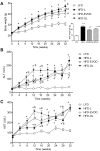
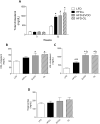


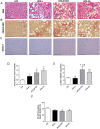
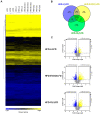
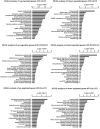
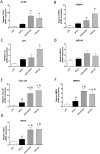
Similar articles
-
An extra virgin olive oil rich diet intervention ameliorates the nonalcoholic steatohepatitis induced by a high-fat "Western-type" diet in mice.Mol Nutr Food Res. 2017 Mar;61(3). doi: 10.1002/mnfr.201600549. Epub 2016 Dec 13. Mol Nutr Food Res. 2017. PMID: 27749006
-
Extra-Virgin Olive Oil with Natural Phenolic Content Exerts an Anti-Inflammatory Effect in Adipose Tissue and Attenuates the Severity of Atherosclerotic Lesions in Ldlr-/-.Leiden Mice.Mol Nutr Food Res. 2018 Jul;62(13):e1800295. doi: 10.1002/mnfr.201800295. Epub 2018 Jun 12. Mol Nutr Food Res. 2018. PMID: 29763526
-
Supplementation with Docosahexaenoic Acid and Extra Virgin Olive Oil Prevents Liver Steatosis Induced by a High-Fat Diet in Mice through PPAR-α and Nrf2 Upregulation with Concomitant SREBP-1c and NF-kB Downregulation.Mol Nutr Food Res. 2017 Dec;61(12). doi: 10.1002/mnfr.201700479. Epub 2017 Nov 13. Mol Nutr Food Res. 2017. PMID: 28940752
-
Olive Oil's Attenuating Effects on Lipotoxicity.Adv Exp Med Biol. 2024;1460:869-882. doi: 10.1007/978-3-031-63657-8_29. Adv Exp Med Biol. 2024. PMID: 39287875 Review.
-
Liver Protective Effects of Extra Virgin Olive Oil: Interaction between Its Chemical Composition and the Cell-signaling Pathways Involved in Protection.Endocr Metab Immune Disord Drug Targets. 2018;18(1):75-84. doi: 10.2174/1871530317666171114120552. Endocr Metab Immune Disord Drug Targets. 2018. PMID: 29141573 Review.
Cited by
-
Forsythia suspensa leaf fermented tea extracts attenuated oxidative stress in mice via the Ref-1/HIF-1α signal pathway and modulation of gut microbiota.Sci Rep. 2025 Feb 3;15(1):4106. doi: 10.1038/s41598-025-87182-6. Sci Rep. 2025. PMID: 39900709 Free PMC article.
-
Investigation of the Effect of Curcumin on Protein Targets in NAFLD Using Bioinformatic Analysis.Nutrients. 2022 Mar 22;14(7):1331. doi: 10.3390/nu14071331. Nutrients. 2022. PMID: 35405942 Free PMC article.
-
Oxidative Stress as a Target for Non-Pharmacological Intervention in MAFLD: Could There Be a Role for EVOO?Antioxidants (Basel). 2024 Jun 16;13(6):731. doi: 10.3390/antiox13060731. Antioxidants (Basel). 2024. PMID: 38929170 Free PMC article. Review.
-
Therapeutic Properties and Use of Extra Virgin Olive Oil in Clinical Nutrition: A Narrative Review and Literature Update.Nutrients. 2022 Mar 31;14(7):1440. doi: 10.3390/nu14071440. Nutrients. 2022. PMID: 35406067 Free PMC article. Review.
-
The Effects of Olive Oil Consumption on Biochemical Parameters and Body Mass Index of People with Nonalcoholic Fatty Liver Disease: A Systematic Review and Meta-Analysis of Randomized Controlled Trials.Nutrients. 2024 Mar 15;16(6):857. doi: 10.3390/nu16060857. Nutrients. 2024. PMID: 38542768 Free PMC article.
References
-
- Gastaldelli A. Fatty liver disease: The hepatic manifestation of metabolic syndrome. Hypertens. Res. 2010;35:585–593. - PubMed

